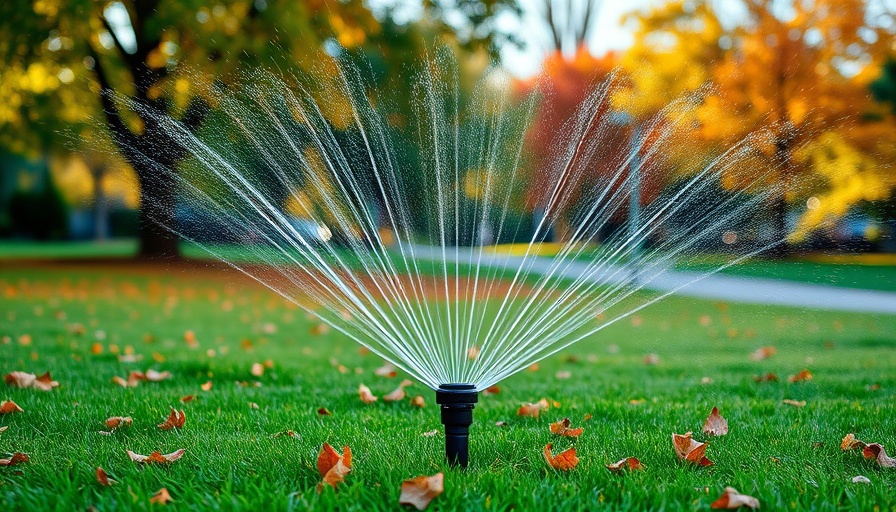
Understanding Your Lawn's Water Needs This Fall
As the crisp air signals the arrival of fall, homeowners often wonder when to properly reduce their lawn watering. Knowing when to stop watering your lawn can significantly impact its health as it prepares for the winter and ultimately, for a robust spring comeback. It's essential to balance your watering routine to avoid issues like root rot or fungal infections, which can arise from overwatering during the cooler months.
Key Strategies for Effective Lawn Watering
During early fall, your lawn still has some hydration needs. Aim to water once or twice a week, preferably in the morning between 5 a.m. and 9 a.m. This schedule allows the grass to absorb as much moisture as possible before the day heats up, minimizing water loss due to evaporation. As temperatures drop and growth slows, gradually reduce the frequency, taking cues from rainfall and natural moisture levels.
Once winter arrives, active management of watering becomes crucial. If there is no snow cover and temperatures remain above 40 degrees Fahrenheit, light watering every two to three weeks might be necessary to counteract dry winter winds. This strategy will keep your lawn hydrated without risking damage from frozen soil or excess moisture.
The Importance of Soil Testing in Fall
Understanding your soil's moisture levels is also vital. Regular soil testing can inform you about the nutrient content and dryness of your lawn. Different areas may require specific care based on air temperatures and ground conditions, making it crucial to test soil before deciding on your watering schedule.
Preparing Your Lawn for Spring
Proper fall watering prepares your lawn for successful regrowth when spring arrives. Homeowners can benefit from professional lawn maintenance services for irrigation system installation, aeration, and overseeding to fortify their lawns against the harshness of winter. In Shelby, MI, local lawn care professionals are equipped to create custom lawn care plans that prioritize both aesthetic appeal and ecological health.
Common Misconceptions About Lawn Care
Many homeowners believe that less watering in the fall means neglecting their lawns, but the opposite is true. Healthy hydration helps your grass and soil remain nutrient-rich, avoiding drying out as winter sets in. Remember not to skimp on essential services like seasonal lawn maintenance or soil testing; these practices safeguard against future lawn diseases and enhance long-term resilience.
As you consider the needs of your landscaping this fall, don't overlook the value of professional lawn care services in Shelby, MI. From sprinkler repair to pest control for lawns, utilizing local experts can ensure your yard remains both visually appealing and sustainably cared for.
A Call to Action: Invest in Your Lawn's Future
If you're looking for expert guidance on fall lawn care or wish to enhance your yard's landscape with professional services, contact trusted lawn care companies in Shelby, MI today. A healthy lawn not only beautifies your property but also increases its value, making it a worthwhile investment.
 Add Row
Add Row 
 Add
Add 


Write A Comment